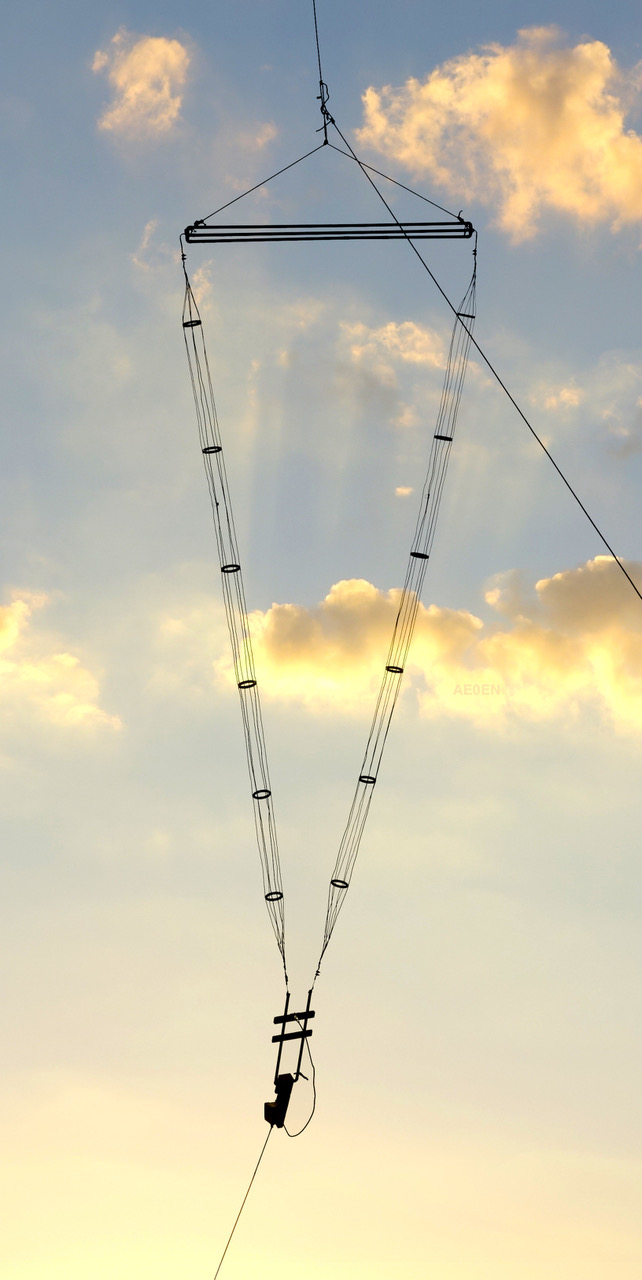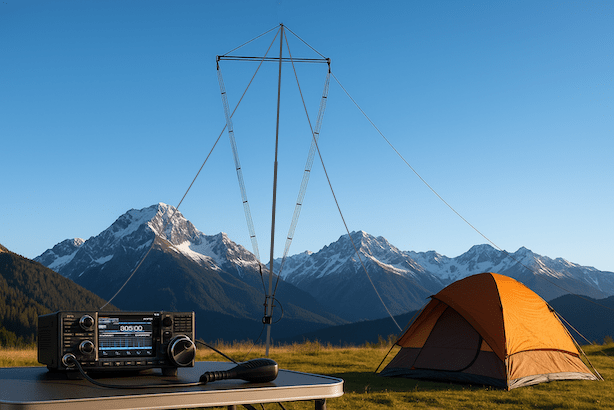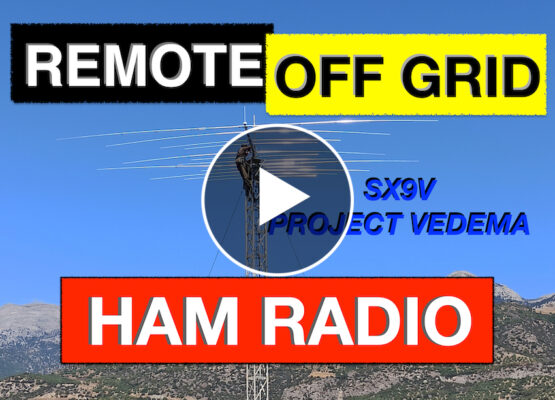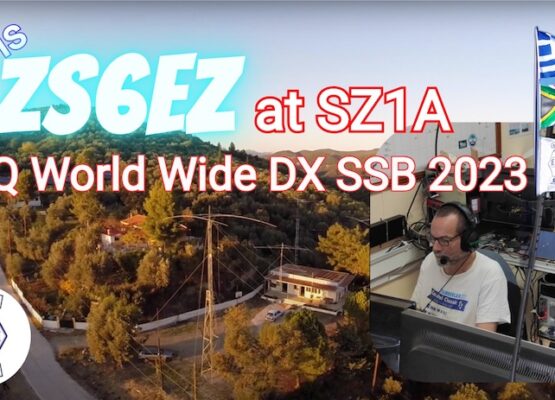Exploring the Caged Hen-Delta Antenna
Unlocking Big DX from Small Spaces
Contents
Introduction
Amateur radio often rewards those willing to explore less-traveled paths. The 6-band, 6m-20m Caged Hen-Delta antenna is one such path — a hidden gem offering exceptional performance, surprising versatility, and unmatched practicality for operators facing space, budget, or regulatory constraints.
After two years of hands-on experimentation, careful refinements, and genuine discovery, I am excited to introduce this lightweight, low-profile, and highly effective antenna design. Whether you operate from a city lot, a suburban backyard, or simply wish to experiment with an unconventional but highly capable loop, the Hen-Delta is an antenna you will want to explore.
This article provides a detailed overview of the Hen-Delta’s evolution, construction, performance, and potential. If you find yourself intrigued, a direct link to the complete 120+ page illustrated study is available at the end.
That said, in a nutshell;
What is the Caged Hen-Delta Antenna?
The Caged Hen-Delta Antenna is a compact, highly efficient ‘skinny’ delta loop antenna designed for amateur radio operators who are constrained by space or regulations. Ideal for those in urban areas or suburbs where large antennas are impractical, the Hen-Delta provides exceptional performance in a small footprint.
What sets the Hen-Delta apart is its unique ‘skeleton slot’ nature, where the E- and H-fields are reversed, meaning that the Hen-Delta is a ‘magnetic’ antenna which, while geometrically vertical, nonetheless radiates horizontal polarization.
Its simple structure consists of a top element of copper pipe, two caged element sides, and an amazingly versatile copper pipe tuning stub. The tuning stub has two sliding ‘tap’ connectors (‘sliders’) per band, whose position determines SWR center frequency and SWR minima depth. Caging broadens bandwidth dramatically, and the ‘skeleton slot’ quality provides low angle radiation.
The result is a versatile antenna that is both easy to build and capable of achieving impressive DX results.
How is the Caged Hen-Delta Antenna Constructed?
The Hen-Delta consists of just a few key components:
- Top Horizontal Element: Made from 1/2″ copper pipe for strength and conductivity.
- Side Wires: Insulated stranded copper wire of 12- to 16-gauge, with parallel caging wires held in place by a few 3–12 inch spreader rings. Caging improves bandwidth dramatically.
- Tuning Stub: A U-shaped ½” copper tube at the base with a pair of sliding taps (‘sliders’) per band for precise impedance matching. Multiple pairs of these taps allow multi-band operation.
- Support Structures: Trees, fiberglass poles, or simple masts using lightweight ropes and pulleys for easy height adjustments.
The antenna’s design is intentionally simple, using accessible materials that can be quickly assembled and installed. Its small turning radius (about 7% of a wavelength) allows it to be used in limited spaces, such as in a narrow column of space in a tree. For example: A 10m Hen-Delta has a 30” (0.75m) turning radius, and a 15m Hen-Delta has a 39” (1m) turning radius. A 2-element yagi would be four times larger.
What Are the Benefits of the Hen-Delta Antenna?
The Caged Hen-Delta offers numerous advantages for amateur radio operators, especially those working within space constraints or urban environments:
- Compact and Efficient: The small turning radius makes it ideal for limited space installations, where traditional antennas would be impractical.
- Broadband Performance: The caging dramatically broadens the antenna’s bandwidth.
- Low Noise: Its horizontal polarization naturally suppresses urban noise.
- Multi-Band Capability: With a single antenna, you can operate on any subset of, or all of, 6m, 10m, 12m, 15m, 17m, and 20m bands, either by manually moving a feedline, or via a remote switch.
- Simple Construction: The Hen-Delta can be built in a few afternoons.
- Lightweight: The Hen-Delta is lightweight for its performance, typically 7-25 lbs (3-11 kg). The lighter versions are suitable for POTA, SOTA, and DXpeditions.
- Low Cost: The Hen-Delta antenna itself, with a 1:1 current balun, can be built for $150-$200.
- Simple Support Structures: Trees, fiberglass poles, or simple backyard masts using lightweight ropes and pulleys
In short, the Caged Hen-Delta Antenna is a practical, high-performance solution that delivers surprising DX performance from a small, stealthy, and easily constructed design.
The Beginning: A Simple Idea Turns Into Real DX
My Hen-Delta journey began modestly with the discovery of Portune & Bailey’s 6m copper pipe Hen-Delta (see the paper’s title page ‘acknowledgements’). Having no interest in 6m, I attempted a scaled 10-meter Hen-Delta The antenna hung only 26 feet above the ground, was rotated manually, and had no pretensions of grandeur. It was simply a tentative experiment born of curiosity and hope.
The results, however, were nothing short of astounding!
On Day-1, March 26, 2023, using 100 watts, I logged multiple contacts with Alberta, Hawaii, Brazil, Australia, Paraguay, Argentina, Chile, Mexico, and Japan!
Multiple continents – from a skinny delta loop just 5’ x 17’ (1.5m x 5m). The sense of wonder and discovery was immediate. Clearly, there was more potential here!
Recognizing the unrealized potential, I worked to improve the setup: A pulley mounted over a strong tree limb at 43 feet provided much-needed elevation – greater than 1 wavelength above ground is best for DX – while a homemade rotator system built from a small 12V gear motor allowed me to turn the antenna with surprising precision.
These modest upgrades laid the foundation for the next, far more significant breakthrough.
The Breakthrough: The Art of Caging
While the Hen-Delta already showed promise, it truly came to life when I began experimenting with caging ie. the addition of parallel conductors around the down wires.
Each step increase in caging diameter “fattened” the effective radiating elements, dramatically increasing bandwidth ie. low SWR over broader and broader frequency ranges. I ‘rediscovered’ the general rule that cage diameters ~2% of wavelength provide maximum bandwidth!
This effect later prompted me to explore “fractional caging,” which is detailed in Chapter 16 of the paper: caging appears to be a linear function of the fraction of the antenna caged, meaning that there is no need to cage every tiny bit of an antenna.
The Hen-Delta was no longer just a compact loop. It had evolved into a sophisticated, highly adaptable antenna capable of competing with heavier, more costly antenna systems – all from a simple structure you can build in a weekend or two.
Expanding the Horizons: Multi-Band Operation
While my first 10m Hen-Delta provided exciting DX, I soon wished access to more bands.
A 15m Hen-Delta hanging from a second tree limb 58 feet above ground, became the next step. Hitting the target limb with the messenger line required nearly two weeks of patient, part-time, slingshot work — a true amateur radio adventure!
Once on 15m, I wanted 20m – and built one. All three antennas worked beautifully, but swapping the 15m and 20m monoband antennas was a real nuisance… Could a single Hen-Delta operate on multiple bands? I wondered…
A meter-long, 10m/12m tuning stub was attempted – and was successful!
Most importantly, the Hen-Delta offered freedom: freedom from towers, freedom from zoning battles, freedom from excessive costs, and freedom to experiment and innovate.
A critically insightful experiment was then attempted – could the 10m/12m loop also tune two wavelengths of 6m? It worked! I coined this band 6mX2 (6m times two). This new understanding opened up vast new possibilities!
I then constructed a gargantuan 12-foot-long multi-band, 6m-20m tuning stub – a major effort – and I was able to achieve excellent performance on all six bands.
Two sets of CX-600M relays (they are expensive) and NC shorting relays provided remote band selection for 15m, 17m, and a movable coax connector to one of: 10mX2, 20m, or 12mX2. The last band 6mX3 (X3 means three wavelengths of 6m) was, by chance, co-resonant on several other bands and was therefore ‘free’. No separate tuning sliders (taps) were need for it, although they could be added if 6m was a priority. An additional two CX-600M relays would allow for full remote band selection, if desired.
Performance in Practice: DX Results and Field Observations
On-air results consistently exceeded expectations.
The antenna provides modest azimuth gain — nearly one S-unit — similar to a 2- or 3- element yagi, and enough to make a meaningful difference when chasing marginal DX signals.
With the antenna elevated to one to two wavelengths above ground (depending on the band’s wavelength), I was able to consistently achieve low-angle radiation essential for long-distance contacts as shown in this distance summary.
I have worked 96 countries on phone beyond the first 80 countries previously worked with horizontal loops. Total 176 countries as of this writing. Some examples:
- > 5000 miles: Too many to list.
- > 8000 miles: Eastern Australia, New Zealand, South Africa, Tanzania, Namibia, India, Thailand, Cambodia, Vietnam, Indonesia, Philippines, Norfolk Island.
- > 9000 miles: Central Australia, Tasmania, Madagascar, the Seychelles islands, Malaysia, Indonesia.
- > 10,000 miles: Western Australia, Reunion Island.
My personal distance record from St. Louis, Missouri USA is Perth, Australia – 10,885 miles or 17,517 km. Propagation was good but not ‘magical’, with QSB and some noise. We both logged signal strengths of ‘44’… but ten minutes later it would have been ‘55’.
Most of these were accomplished at 100W, but adding a modest amplifier of 600 watts (300W in each direction) made these far away DX contacts much easier. Don’t expect to out compete the ‘big gun’ operators in pile-ups with their tall, high gain yagi’s and 1500W, but be persistent and you will get through!
Most importantly, the Hen-Delta offered freedom: freedom from towers, freedom from zoning battles, freedom from excessive costs, and freedom to experiment and innovate.
Conclusion: Why You Should Build One
The Caged Hen-Delta antenna is a testament to what makes amateur radio so rewarding: Creativity. Ingenuity. Experimentation. Discovery.
- It offers a low-cost, stealth-friendly, high-performance alternative to conventional antennas.
- It empowers operators in challenging environments to reach around the globe.
- It invites continual tinkering, upgrading, and learning.
I encourage you to give it a try. Build. Test. Discover. “Travel the world at the speed of light!”
If you build a Hen-Delta, you won’t just be stringing up wire. You will be opening a new door into the heart of amateur radio — where exploration, achievement, and joy still thrive.
73 and Good DX!
– John AE0EN
St. Louis, Missouri USA
Many thanks to Andy SV1DKD & Team SZ1A for their kind assistance in creating this Introduction.
Download the Full Paper
For those ready to explore further, the full 120+ Page Illustrated guide is available. The author suggests first reading A Brief Overview and Appendix-5 (the 6-band, 6m-20m Hen-Delta):
Download here:
(Scroll down to ‘Download Options’ and select PDF. When downloaded, SAVE AS to your desktop.)
Exploring the Caged Hen-Delta Antenna PDF (Archive.org)
You can also view it directly below:









